Leatherwork - introduction
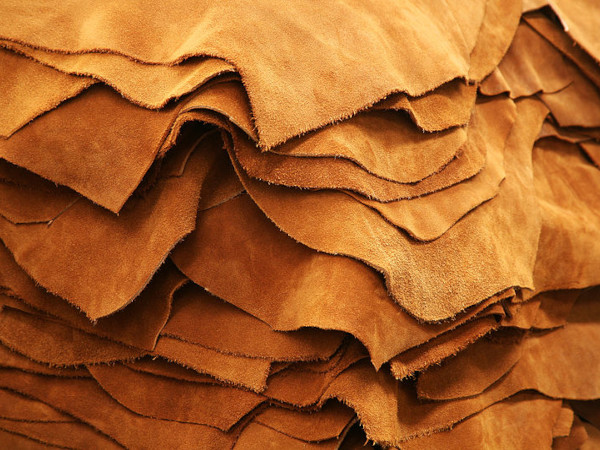
“Medieval man did not see ‘just leather’, he saw the beast – perhaps one of his own – and knew the effort of slaughtering, liming and curing.” – Dorothy Hartley: The Land of England
Contents
What is leatherwork?
Leatherwork is making items from leather (tanned animal skin). As with many crafts, there are a number of steps from the raw material – in this case a piece of leather – to a finished item. Leather craft involves designing, cutting, and then, depending on the project, hole punching, sewing, and finishing. Additional steps could be decorating, carving and dyeing.
Leather workers often make practical things like belts, bags, shoes and book covers, as well as saddles and other horse tackle, or more artistic items such as jewellery. Leather is a hard-wearing, durable, long-lasting material. Leather thickness, flexibility and strength varies massively, depending on the animal, and where on the body each piece is from. Of course, no two skins are the same, as each animal is very different.

History
Leatherwork has ancient beginnings, probably with early humans simply sewing hides together with bone needles to make clothing. Animal skin parchment was used for early writing, before paper was invented. Leather was the primary clothing material for thousands of years, before weaving was developed.
Tanning was important in ancient Egypt and Rome, and leather was used for footwear and clothes, as well as armor and shields. Throughout history, leather continued to be used for hard-wearing clothing, military equipment, belts, bags and much more. Tanning techniques actually changed very little (predominantly using tree barks) until in the 19th century with the introduction of chrome salts as a new chemical tanning agent. Modern leather is now available in all colours, and can be much softer and more supple for bags, clothing and furniture.

What are the benefits of leatherwork?
- It can be empowering and enjoyable to create your own items rather than buy them
- By practicing leatherwork you are keeping a traditional skill alive
- Leatherwork is a useful skill and you will able to create, and repair many items
- Professionally-made leather items can cost a fair bit, so you can save money by making something yourself. By investing what you would have spent on a leather satchel on the tools and teaching, you will have a home-made satchel and the ability to make more
- Leather is incredibly durable if looked after properly, so by making something from leather, you are avoiding the disposable culture of cheap, mass-produced items
- Leather is a beautiful, natural product and crafting with this material can connect you back to an ancient lineage of craftspeople and leatherworkers
- If you are using leather you tan yourself from waste skins, you can work with a material that you have a direct connection with, produced ethically and with a very low environmental footprint

What can I do?
With a few of the right tools, and some instruction, it’s possible for a beginner to create beautiful and useful leather items. There are a number of introductory leatherwork courses available, and as with any craft, learning from an expert with years of experience can help you pick up the skills and techniques much more quickly than by reading or watching videos. If that doesn’t appeal, there are plenty of online guides and books to get you started – see resources.
Obtaining leather
The tanning process transforms a raw skin into a preserved piece of leather, resistant to rot. As a leatherworker, you may want to tan your own, or to buy leather. Leather is usually sold by the square foot and priced by the ounce (which is actually a thickness, not a weight). You can buy whole skins, or sections such as back, belly or sides. Cow hides are the most commonly sold skins.
There are two main types of leather available – chrome-tanned, and vegetable-tanned. As a small-scale (and environmentally-conscious) leatherworker, you are most likely to want vegetable-tanned leather, due to its quality, versatility, and the fact that vegetable-tanned leather uses tree bark or acorns, and is therefore much more environment- and tannery-worker-friendly than the toxic mix of chemicals used in a chrome tannery.
A great table outlining the comparison (from a leatherworker’s perspective) of vegetable-tanned and chrome-tanned leather, as well as detailed information on buying leather, can be found here.

Tools
There are a fair number of tools you need to complete simple leatherwork projects, and then a number of specialised tools for a more professional look, or for more complicated work.
The most important simple tools are:
- sharp cutting knife – a metal craft knife can work
- cutting board and metal ruler
- stitch marker and stitching awl
- needles and thread – leather needles are usually thicker and blunter than other needles, as the holes are pre-made with an awl
- hole punches – round for rivets and oval for belt holes
- edge beveler tool and slicker or canvas cloth and beeswax for making the edges look neat and smooth
- rawhide or copper-faced mallet
There are a number of specialist online retailers supplying leatherwork tools. You can also improvise your own.

Some leatherwork techniques
Designing
You could design your own piece – have a look at other leather items to see what shapes are used and how they fit together. There are also templates available to buy online from some leatherworkers and suppliers.
Cutting
Some people use card templates and draw around these onto the leather; others draw (or scratch) directly onto the leather surface. Either way, don’t forget to leave a seam allowance. The sharper your tool, the cleaner the cut. This will look neater, prevent snagging, and also save you time later when finishing the edges. Use a metal ruler to keep the blade lines straight.

Sewing
Some people glue the two sides together to help hold the piece in place whilst sewing. For a neat look, each stitch is marked out and spaced evenly using a pricking tool or stitching wheel. Then the holes are pierced using an awl. It’s possible to hold the work in place with a stitching pony, which makes the hole piercing and sewing much simpler. A stitching pony is a wooden clamp that holds the leather still while you sew, without damaging the surface.
For saddle stitch, which is the most commonly-used stitch in leatherwork, you need two needles and some strong thread. You criss-cross your stitches back and forth for a strong, neat-looking finish. It’s also possible to sew with a sewing machine, though you need a special type, and this would be a big investment for a beginner leatherworker.
Edge finishing
It makes a real difference to a piece of leatherwork if the edges are smooth-finished. There are a number of techniques – but basically it involves cutting the edge at an angle, applying an edge-finishing medium (either bought or made), then rubbing with various tools or cloths until it is smooth. You can also dye the edges so that they blend in with the surface of the leather.

Fastenings
There may also be a need for adding fastenings – on bags or belts for example. You can buy studs, poppers, belt buckles and more from many leatherwork suppliers.
Carving and stamping
Designs and patterns can be carved or imprinted into leather. You need a few specially-designed tools or stamps.
Wet forming
By soaking leather, and stretching it over a mould as it dries, you can form it into shapes. This works well for bags and pouches.

Specialist(s)
Thanks to Jessie Watson Brown of Wildmoor Tannery and John Hagger of Tanner Bates for information and some photos.
The specialist(s) below will respond to queries on this topic. Please comment in the box at the bottom of the page

Jessie Watson Brown is on a path of rewilding and reskilling. Weaving together a deep reskilling through making and crafting using natural materials, with immersing herself in the natural world and learning the ways of our ancestors. She is a tanner and basket weaver. You can find our more about her at her site: Wildmoor Tannery.

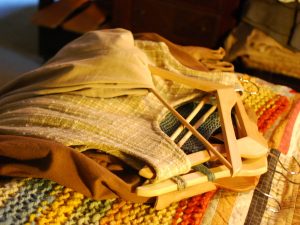

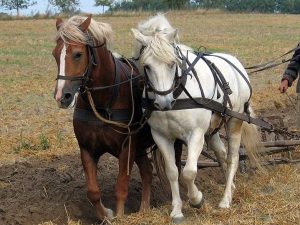
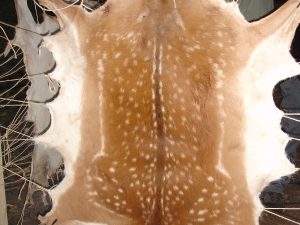

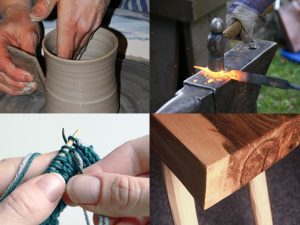
2 Comments
good explanation